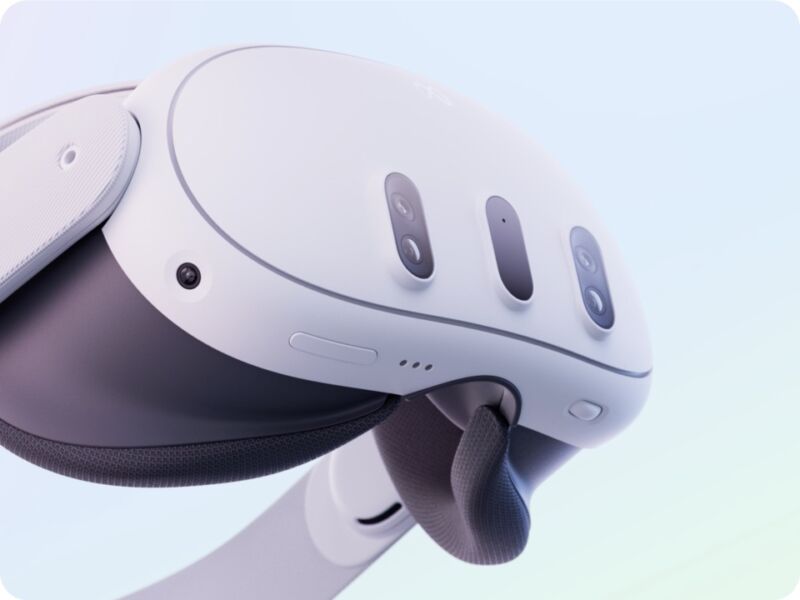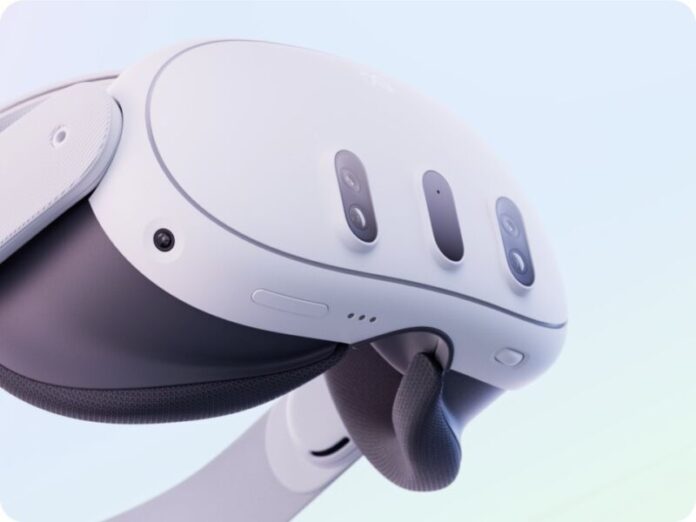
Enlarge / Look into my eyes... all three of them. (credit: Meta)
You'd be forgiven for not realizing that the Quest 3 is actually the fourth headset in Meta's popular Quest line. In fact, Meta would probably prefer that everyone forget about last year's ill-considered Quest Pro, which paired a handful of minor improvements with an absolutely massive $1,500 starting price. Even a quick price drop to $1,000 couldn't save this over-engineered stopgap gadget.
What a difference a year makes—or three years, for VR aficionados who wisely stuck with 2020's Quest 2 until now. The Quest 3 offers distinct improvements over previous Quest headsets in the areas that matter most (resolution, form factor, etc.) without many of the Pro's more expensive, heavy, and least necessary indulgences (eye-tracking cameras, rechargeable controllers, charging dock, etc.). The Quest 3 also offers a usable (but rough) suite of new mixed-reality features, providing an intriguing glimpse of a world where VR content is routinely layered over our view of reality.
Most importantly, the Quest 3 does this all at a mass-market price (starting at $500) and in a way that ensures continuity with Quest's existing software. While there's nothing here that will usher in the long-sought virtual reality revolution, this is the kind of incremental improvement the space needs if it's going to continue to increase the size of its niche.
Read 29 remaining paragraphs | Comments
Ars Technica - All contentContinue reading/original-link]




